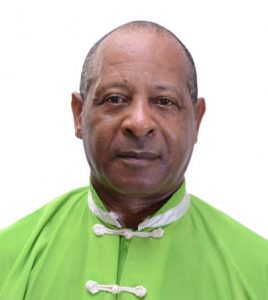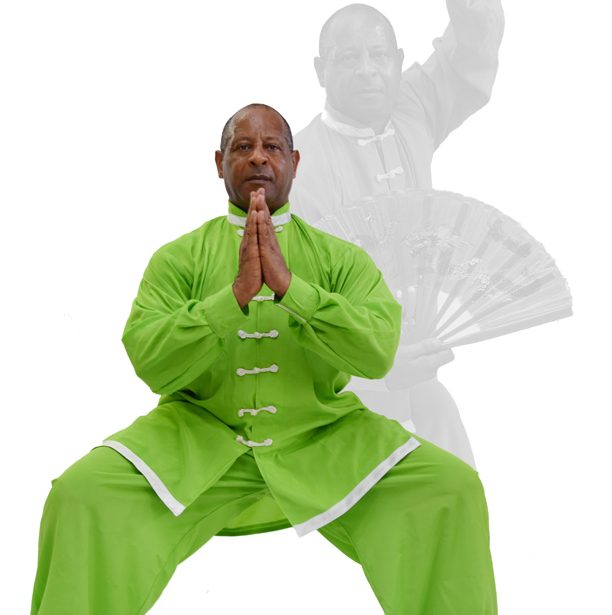“Tai chi is a very total art. It is high art disguised as a dance. Every movement has a hidden secret self-defence technique.”
Fast movements, high-kicking and wild yells are what generally come to mind when we think of ‘martial arts’. To see someone moving through slow, free-flowing natural postures and movements seems incongruous to the genre.
But tai chi, when performed by a trained expert, can be one of the most effective martial arts.
Most martial arts do not train for common real life situations“Most martial arts do not train for common real life situations,” explains Sifu Rahman Khabir. “In a tournament, a touch is a point, and it goes on for some time. In a real-life situation, you don’t have minutes to tackle your attacker. Tai chi teaches you the quickest, most effective way to take out your opponent, usually within less than 30 seconds.”
Beyond being a martial art, tai chi can strengthen one’s internal organs, and have positive effects on the heart, blood pressure, and joint flexibility.
As Sifu Rahman Khabir explains, it is a ‘total art’; one that encompasses the entire body. It is a system of living through calculated movements, and it is his way of life.
A Career in Martial Arts
Sifu Rahman Khabir has over 46 years of experience, having been involved with martial arts since 1968.

A Pan American Gold Medallist and a four-time U.S.A. Hall of Famer, Sifu Khabir is the President of the Wushu Association of Trinidad and Tobago, the Tai Chi Institution of Trinidad and Tobago, and the Caribbean Wushu Federation; and also an Executive Member of the Pan American Wushu Federation.
He is also an affiliate member of the Trinidad and Tobago Olympic Committee and the International Wushu Federation.
Sifu Khabir has studied under well-known expert masters in the field including:
- Grand Master Alan Lee
- Gin Foon Mark
- Robert Mack
- Dr. Danny Roy McEaddy
- James Fain
- Lu Ping
- Pan Quing Fu
- Jou Tsung Hwa
- B.P. Chan
- William Chen
- Mangtak Chia
- Daniel Lee
- Dr. Yang
- Victor Frias
- Leibert Mapp
- Sterling Richardson
- Dr. Lionel Gaskin Mayers
- …and others
Some of the specific fields he has studied include Tai Chi Chuan, History Philosophy, Meditation, Weapons, Chin Na, Dim Mak, Iron Shirt, Iron Palm, Iron Throat, Self Defence, Healing Sounds, Body Mechanics, Kung Fu Wushu, Anatomy Physiology, Hypnosis, Past Life Regression, Massage Therapy, Pressure Points, Seminal and Ovarian Disciplines, Psychic Disciplines and Chi Kung.
A leader in promoting martial artsHe has been a leader in promoting martial arts in Trinidad and Tobago, and has taught throughout the world in countries including Bermuda, Jamaica, St. Vincent, Grenada, St. Lucia, Barbados, Bahamas, Venezuela, Canada, many cities in the U.S.A., Guyana and the United Kingdom.
He has led national teams to achieve excellence and also gain further training on the world stage, and has received numerous awards for his contribution to the field.
Benefits of Tai Chi
Tai chi is a detailed system of free-flowing, smooth and natural poses. Despite appearing light and soft to the untrained eye, a tai chi movement can exert an extremely powerful force.
A detailed system of free-flowing, smooth and natural posesIt is designed to release the tensions of the body and mind, and to assist in maintaining mental and physical fitness. Tai chi has been used alongside medical therapies in institutions throughout the U.S.A., Europe and China.
While all persons can benefit from the teachings of the art form, in particular it is often recommended for the elderly as the movements are not strenuous for those in poor health. It can be performed at one’s own pace and preferred length of time.
Tai chi is ideal for:
- Maintaining a healthy heart and blood pressure: for cardiac patients or those who may not be physically active, it can improve flexibility, strength, balance and muscle tone. It teaches conservation of energy, while the movements also improve circulation and thereby improves the efficiency of the body to receive oxygen and nutrients.
- Effective stress management: it enhances one’s emotional well-being and mental health. Tai chi helps to exercise the internal organs and develop the mind. It is a form of holistic meditation whereby the goals of self-awareness, relaxation, mental organisation and personal direction are achieved. These outcomes are particularly beneficial for the corporate world.
- Body alignment and joint flexibility: it helps with one’s posture and body alignment, which in turn reduces physical stress and allows for better circulation of bodily fluids. The spiral movements rotate the body through the horizontal axis of the joints, increasing joint flexibility. It uses the entire body — shoulders, elbows, fingers, palms, abdomen, hips, buttocks, knees, legs, sides, soles of the feet, toes and eyes. The isometric contractions and expansions of muscles help improve muscle tone as well.
- Treatments that can be treated with tai chi include:
- Arthritis
- Rheumatism
- Lumbago
- Sciatica
- Multiple sclerosis
Through these improvements for those with medical conditions, tai chi can help someone to be more independent and to experience less pain, thereby allowing for a better quality of life.
Martial Arts in T&T
Sifu Khabir, who has been practicing tai chi since his teenage years, is proud of the development he has seen and instigated for martial arts in Trinidad and Tobago.
However, he notes that while the field has been growing, it has also been going slightly off-kilter in its development as many local schools have ‘appropriated’ the art to their own culture.
‘Appropriated’ the art to their own culture“There is a lot of bad information out there, and while it is not possible for myself and others to dictate what a school practices, it will eventually come back to haunt them,” he states. “We tend to have a lot of ‘made up’ tai chi and other martial arts.”

He recalls an incident where he visited a local school with an international representative, and his guest was amazed to see kung fu wear being mixed up with karate belts, and to hear greetings that were not typical to the culture.
“Some things that are in Japanese Martial Arts are not in Chinese Arts, and each martial art has its separate laws and customs — we tend to lump them all together,” he explains.
“We have to always be culturally aware of the outside world. You cannot purport to be teaching a country’s art form if you do not practice the appropriate ways and customs. It is an insult.”
If someone is interested in further pursuing the martial arts, he or she should ensure that the instructor is certified, qualified and experienced to teach the art form in question.
Further Information
- Tai chi is an excellent practice for corporate audiences, as it can be a team-building exercise while also promoting wellness and general health and well-being of employees.
- Tai chi is designed for everyone regardless of fitness level or bodily structure — from toddlers right up to the elderly. Sifu Khabir currently has a class for young children three to four years old.
- For those who associate martial arts with violence and are concerned with the effect on their children, Sifu Khabir notes that a lot of these connotations are mythical. Martial arts on the whole are not about being angry or violent but about self-control and effective self-defence. Of course, combat arts are more likely to result in injury; as such, tai chi is an excellent choice for young children as it is safe to practice.
- The Tai Chi Association, under Sifu Khabir’s direction, offers certification courses in the martial art. There are several levels of expertise, both theory and practical. It is an international certification and is respected worldwide.

